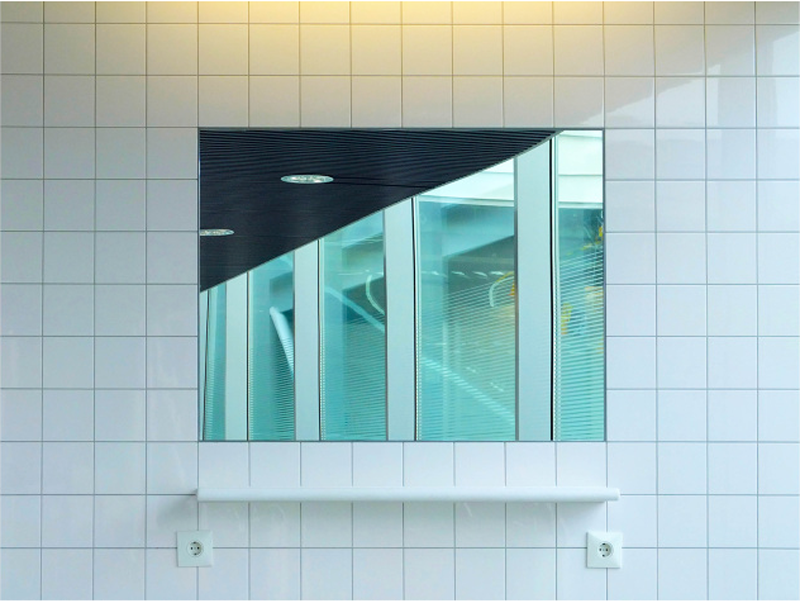
Sharing: a reflection on contemporary dwelling
Rubén Valdez
“Only if we are capable of dwelling, only then we can build” (1) Martin Heidegger in: Bauen, Wohnen, Denken 1951. Based on etymology, Heidegger states that build “Bauen”, relates to the Old English and Old High German word for building, “buan”, which means “to dwell”, to remain or stay in a place. Bauen, according to […]
“Only if we are capable of dwelling, only then we can build” (1)

Martin Heidegger in: Bauen, Wohnen, Denken 1951. Based on etymology, Heidegger states that build “Bauen”, relates to the Old English and Old High German word for building, “buan”, which means “to dwell”, to remain or stay in a place. Bauen, according to Heidegger it relates as well to nearness and neighbourliness and implies to spare and preserve (2). For Heidegger dwelling is the basic character of being, we unconsciously dwell, but only when we’re conscious about it we can build, “build out of dwelling and think for the sake of dwelling”. (3)
Although Heidegger etymologies apply almost ex- clusively in German language, the reflections coming out of them are somehow of universal value, influencing many architects who focused mostly on cultural, historical and emotional values to create architecture which is “richly associative” (4) to the everyday life and the way we inhabit space. There is no question about the fact that we all have different ways of dwelling and different conceptions of home that may vary depending on each of our cultural and social backgrounds and there is no question that a proper understanding of dwelling may lead to a proper understanding of building; However it is of utmost importance to keep in mind that dwelling is a concept in constant change and that even if certain cultural, historical and emotional values remain, the dynamics of society change at a faster rate than architecture does and usually architecture is a consequence of these changes.
As Sheller and Urry affirm in their influential paper The new mobilities paradigm (5), probably one of the most important changes in societies in the last decades has been the fact that a constant movement within different entities (cities, countries or even continents) has become not only more affordable and frequent but in some cases even necessary. Work, studies, pleasure or forced displacement has driven people to name home several places at the same time, appropriating and dwelling different spaces in very short periods of time. Having this in mind, the concept of dwelling becomes more complex; how could we define dwelling in a present where a significant percentage of the population lives in a constant travel? Where more and more individuals dwell simultaneously multiple locations, making it difficult to define the concept of home.
If we define home as the place we appropriate and dwell regularly, then home is the apartment we share 10 days a month, our parents’ house, that charming place we found in Airbnb; Home is Europe, is America, is the intercontinental flight between them; Home is the airports and train stations we know by memory, they become our home for the couple of hours we inhabit them every week (if only all of them had free access wireless).
Internet devices help in keeping us connected to our multiple homes, becoming a key instrument to a simultaneous dwelling. We exist, relate and work through them, they link us with all of our different locations, creating a single one that gives us the comfort none of them can give separately. We continue to develop our lives through a long distance dwelling, we leave, stay in contact and come back trying to re-appropriate places that aren’t necessarily the same each time we visit them. Our territory is a broad multiplicity of places where we develop our life simultaneously; we dwell in movement appropriating and re-appropriating a space that is no longer only ours.
Dwelling several places in short periods of time makes it unaffordable for each of us to cherish and protect all of them, a new way of dwelling has come, less focused on the house and more in the territory, a territory we all share and inhabit constantly despite the distance. Having this in mind we have to question the strategies that are based in a permanent or at least a long term single dwelling for a sedentary life, we need to redefine these strategies either with architecture or with new ways of exchange and appropriation. Sharing comes to mind.
Different strategies have already taken place, whether Airbnb or Kraftwerk 1 (6) in Zürich, they have provided a revolutionary basis to re-think the concept of dwelling and the economic exchanges around it involving completely new ways of appropriation of space. As much as this kind of strategies are mostly of an economic and social nature, it is our responsibility as architects to reflect about this new paradigm and understand it in a much deeper way in order to “build out of dwelling and think for the sake of dwelling”. Society changes at a faster rate than architecture does and the way we dwell is no exception, there is no valid reason to ignore the human and emotional values that compose architecture, but one thing is for sure, the Black forest farmhouse 7 needs to fit the contemporary dweller.